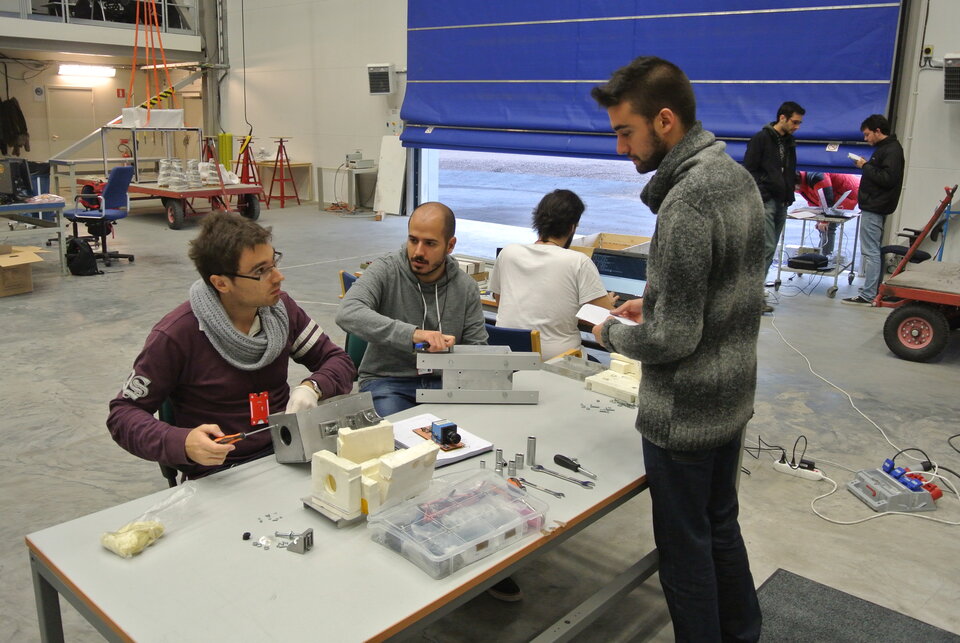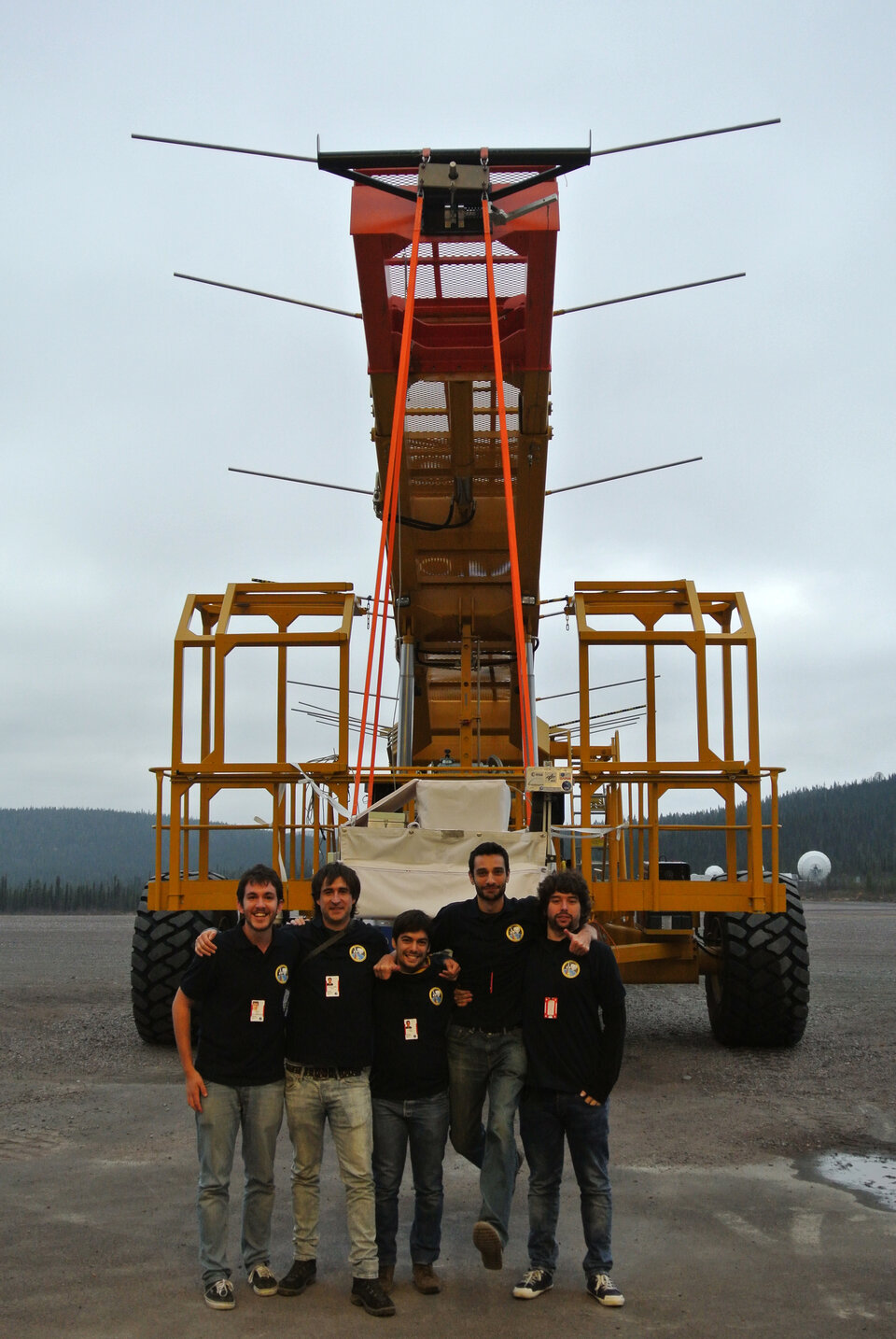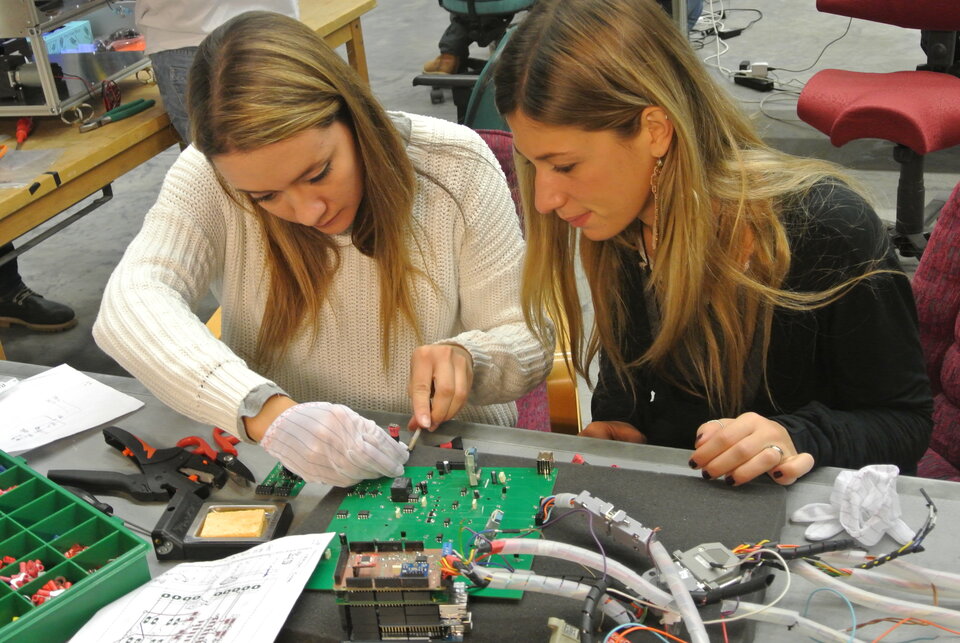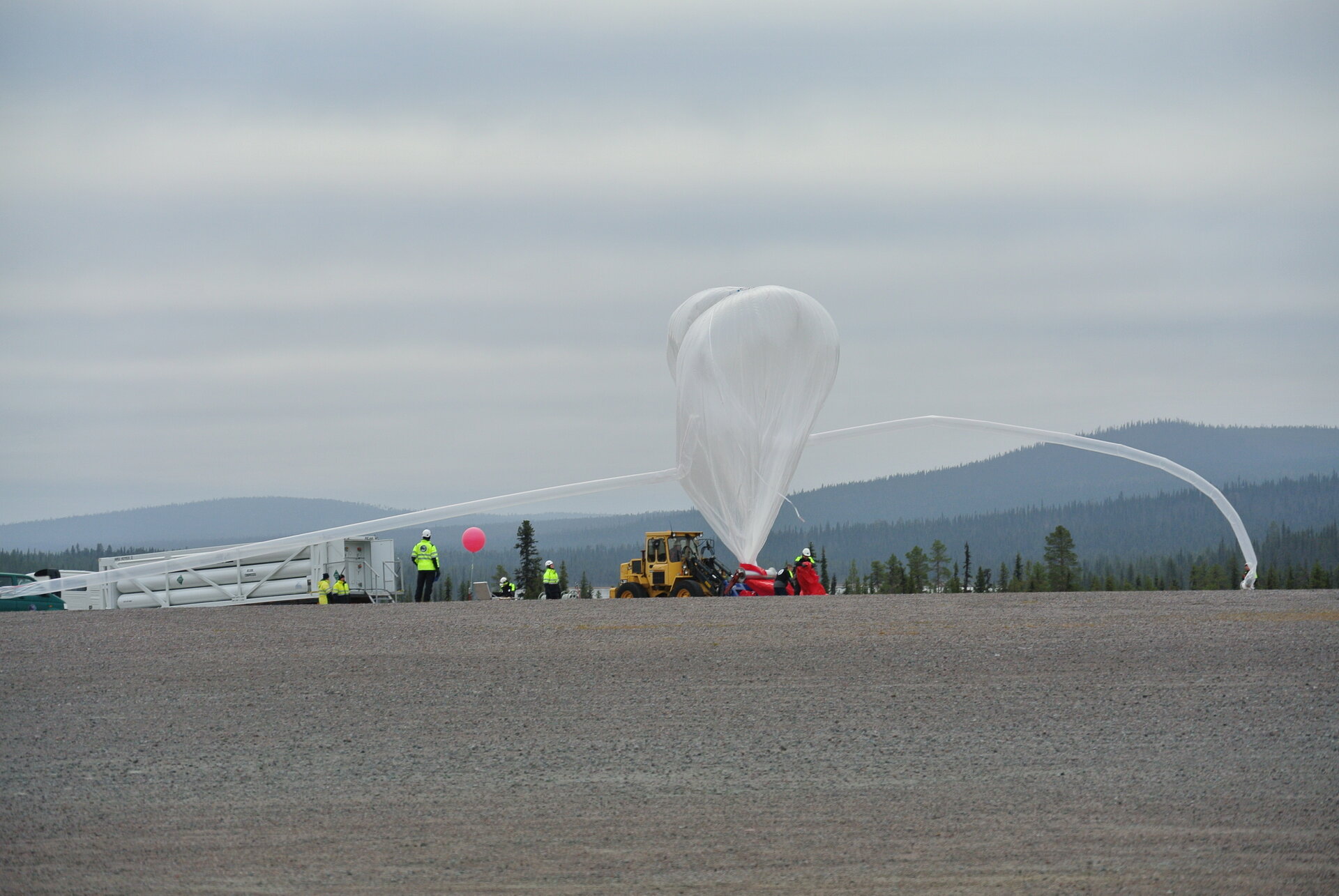BEXUS 18 and 19 ends in success for all student teams
Future engineers and scientists have tasted the success and the challenge of a career in the space sector. Between 3 and 13 October 2014, almost 50 university students attended the latest stratospheric balloon launch campaign to see their experiments rise to more than 27,000 metres. All have now returned to their universities with quantities of data to be analysed.
The German-Swedish REXUS/BEXUS - Rocket and Balloon Experiments for University Students programme provides two sounding rocket and stratospheric balloon launches every year. Four student teams from ESA member states were selected by SNSB and ESA in December 2013 to develop their ideas into experimental apparatus to be flown on BEXUS 18 and 19.
On 3 October, the teams gathered at Esrange Space Center outside Kiruna, Northern Sweden to prepare their experiments for flight. They were joined by five additional teams from Germany, which were sponsored by DLR.
The hard work started immediately with the teams arriving, unpacking and finalizing their experiments. Then they integrated these into the BEXUS gondolas and performed individual tests. After that the experiments were tested for compatibility with each other and then with the gondola’s service systems.

With the flight compatibility tests successfully passed, everything was ready for launch. This took place on 8 and 10 October. Each countdown lasted for 4 hours, with BEXUS 19, the first balloon, floating aloft around 20:00 local time for a night flight.
The ESA/SNSB teams on BEXUS 19 were GranaSAT (Attitude Control for a microsatellite based StarTracker, and Earth's magnetic field measurements) from University of Granada, Spain, and TORMES 2.0 (TOpography from Reflectometric Measurements: an Experiment from Stratosphere) from UPS Barcelona, Spain.
GranaSAT tested an optical system to detect stars or the horizon to determine the attitude for small satellites. Despite high auroral activity, the experiment worked very well and sent back clear images to their ground station were stars and the horizon could be detected. “This whole year, working in a multidisciplinary team, developing a real experiment under space standards, has meant the best learning experience we could have thought about,” said the team in a statement.

TORMES 2.0 used a new type of reflectometer, known as a P(Y) & C/A ReflectOmeter (PYCARO), to detect the scattering of GPS signals from the ground in order to make topographic maps. The team made their first test flight on the previous BEXUS 17 launch last year. This time, thanks to improved telemetry, the students were able to perform all their experimental procedures and collect excellent data. "The TORMES 2.0 team has carried out a successful experiment in the BEXUS programme. The scientific and technological development of the PYCARO payload are being used for the development of a 6U cubesat: the 3Cat2. It has been a great learning process,” they said in a statement.
Two days after, BEXUS 18 took to the skies for a day flight at around 11:00 local time.

The ESA/SNSB teams on BEXUS 18 were A5-UNIBO (Advanced Atmospheric Aerosol Acquisition and Analysis) from Bologna University, Italy, and POLARIS (POLymer-Actuated Radiator with Independent Surfaces) from University of Padova, Italy.
A5-UNIBO investigated the link between the ionisation of aerosol particles and cloud formation. The preliminary results look very promising as the experiment worked exactly as planned during the flight. “BEXUS shows how a little group of people can do great things if you believe in it, and how working together everything is possible. We strongly recommend this experience to university students, and encourage them to apply for BEXUS/REXUS programme,” said the team in a statement.

POLARIS used a new concept of Dielectric Elastomer actuators to vary thermal properties. Rotation of the gondola made the required measurements difficult to make as the experiment moved in and out of sunlight at the beginning of the flight. But as the rotation slowed down, the measurements could be done and the students were able to collect good data. “We think that there are only two words that could describe properly this programme: life changing. We are not speaking of simply growing as engineers, BEXUS is an experience that makes you grow as a person,” said the team in a statement.
In parallel. the German teams performed experiments in the fields of communication, space radiation research, atmospheric physics and technological tests for future cubesat missions.
The two gondolas landed west of lake Porttipahta in Finland. BEXUS 19 spent one and a half day in the woods before being recovered while BEXUS 18 was recovered hours after landing. It took another day to bring the gondolas back to Esrange, were on Saturday 11 the teams were handed back their experiments and downloaded their onboard data.
They are now processing the data to get results and draw their conclusions. The next phase of the programme requires the teams to submit a final version of their documentation containing the results.
The REXUS/BEXUS programme continues next year with a new selection process in progress.
Notes to editors
The REXUS/BEXUS programme is realized under a bilateral Agency Agreement between the German Aerospace Center (DLR) and the Swedish National Space Board (SNSB). Through the collaboration with the European Space Agency (ESA), the Swedish share has been made available to students from all ESA Member or Cooperating States. EuroLaunch, the cooperation between the Esrange Space Center of SSC and the Mobile Rocket Base (MORABA) of DLR, is responsible for the campaign management and operations of the launch vehicles. Experts from DLR, SSC, ZARM, and ESA provide technical and logistic support to the student teams throughout the project.




